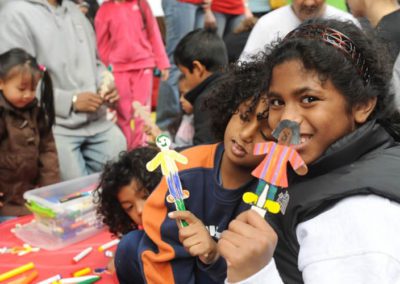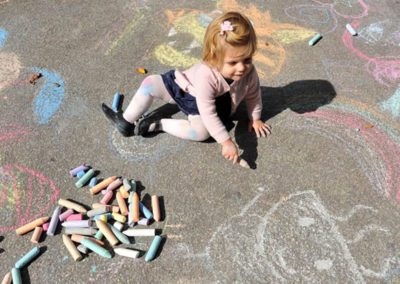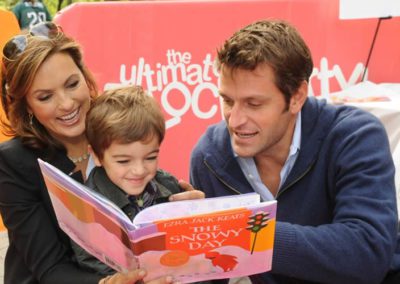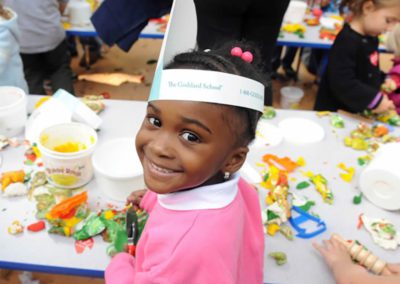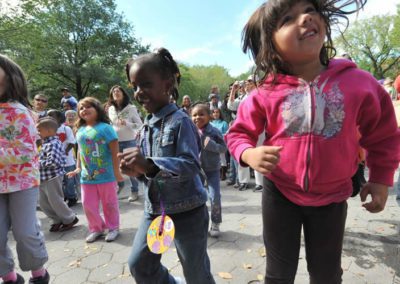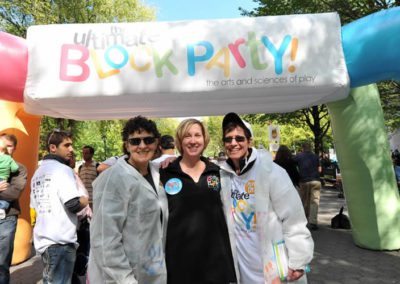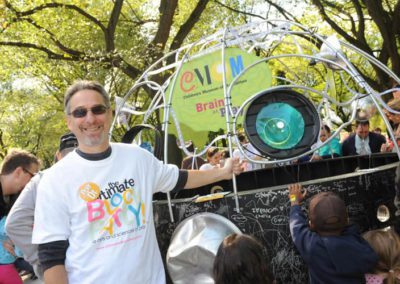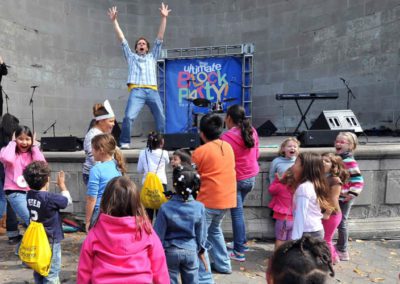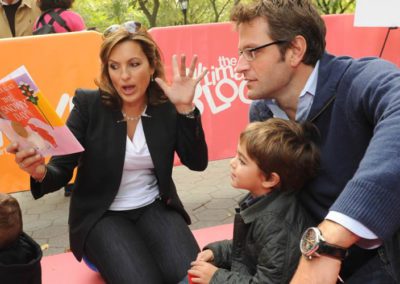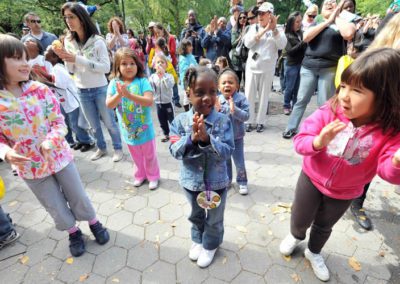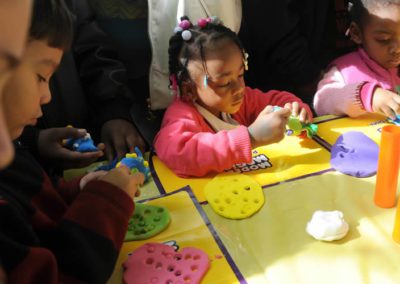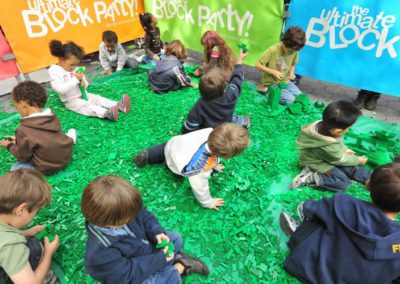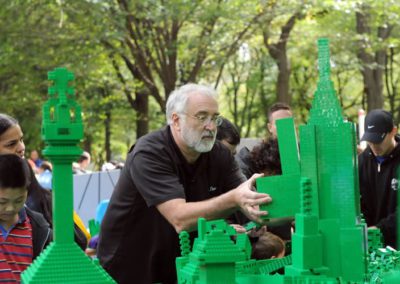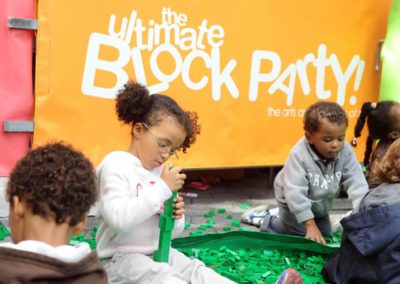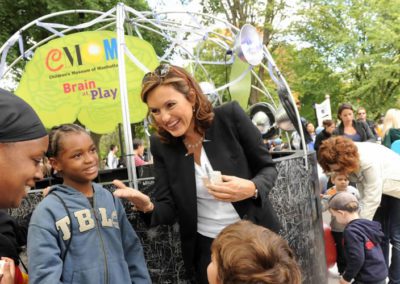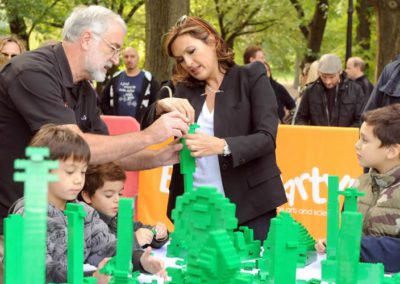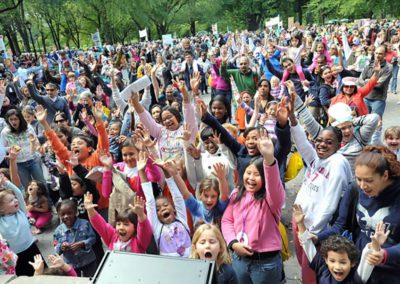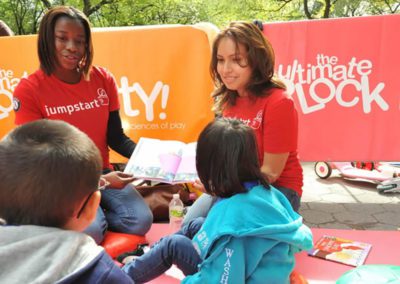PROJECTS > THE ULTIMATE BLOCK PARTY
The Ultimate Block Party
The Ultimate Block Party aims to create a multi-pronged social movement that champions the importance of play and playful learning in children’s lives. We seek to ensure that all children are provided with competitive skills for the 21st century global world and to build a public groundswell about the value of play for fostering lifelong learning in the sciences and the arts. Our mission is to affect policy about children and the way we deliver education in our society by showing off how children learn skills and competencies like the 6Cs in a pop-up event highlighting the science of learning.
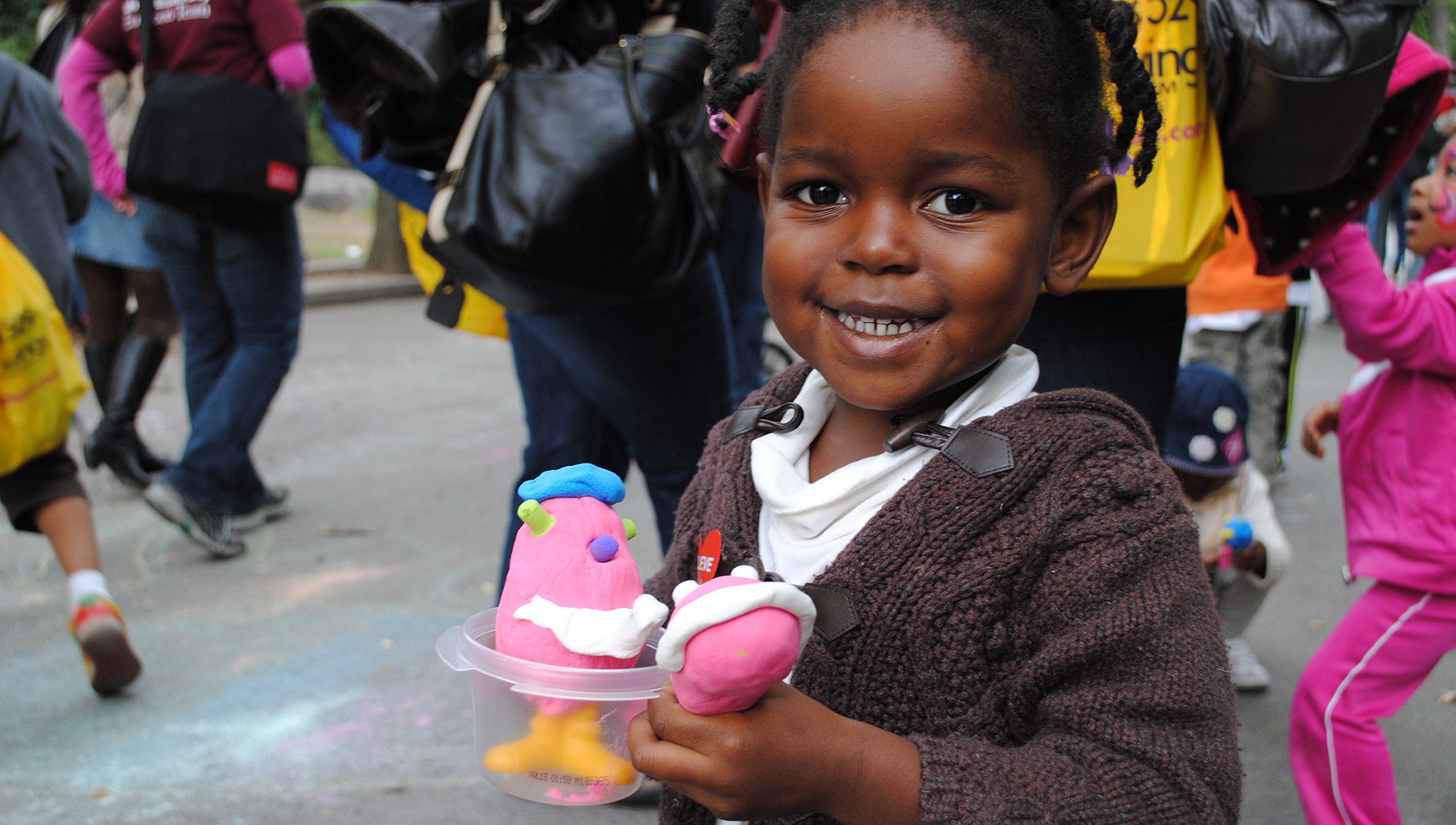
photo: Ultimate Block Party
The Learning Goal
The Ultimate Block Party targeted all of the 6Cs through a series of playful outdoor installations that focused on activities that sparked fun, active, engaged, meaningful, and socially interactive playful learning.
The Design
The original 2010 Ultimate Block Party invited scientists from across the country to transform NYC’s Central Park into a festival of learning.
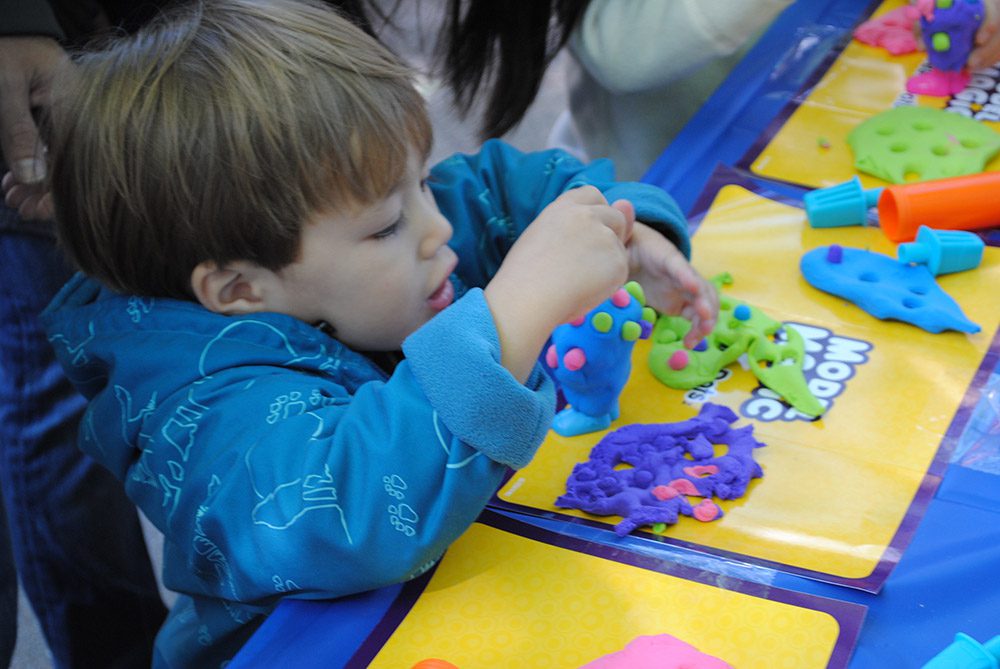
photo: Ultimate Block Party

The Team
The Ultimate Block Party was an idea conceived by Kathy Hirsh-Pasek, from Temple University; Roberta Michnick Golinkoff, from the University of Delaware; Dorothy Singer, from Yale University; Susan Magsamen, from Johns Hopkins University; the Goddard Schools; LEGO Foundation; and KaBOOM!
The Supporters
The Ultimate Block Party was generously supported by three National Science Foundation (NSF) Science of Learning Centers: the Spatial Intelligence and Learning Center (SILC); the Learning in Informal and Formal Environments (LIFE); and the Temporal Dynamics of Learning Center (TDLC). In addition, funding was provided by Temple University and the University of Delaware.
photo: Ultimate Block Party
The Science
Over 50,000 people participated, and 291 people were studied to ask whether they began to see the learning value in the playful exhibits. Those who visited 3 or more of the 28 exhibits began to link play and learning.
